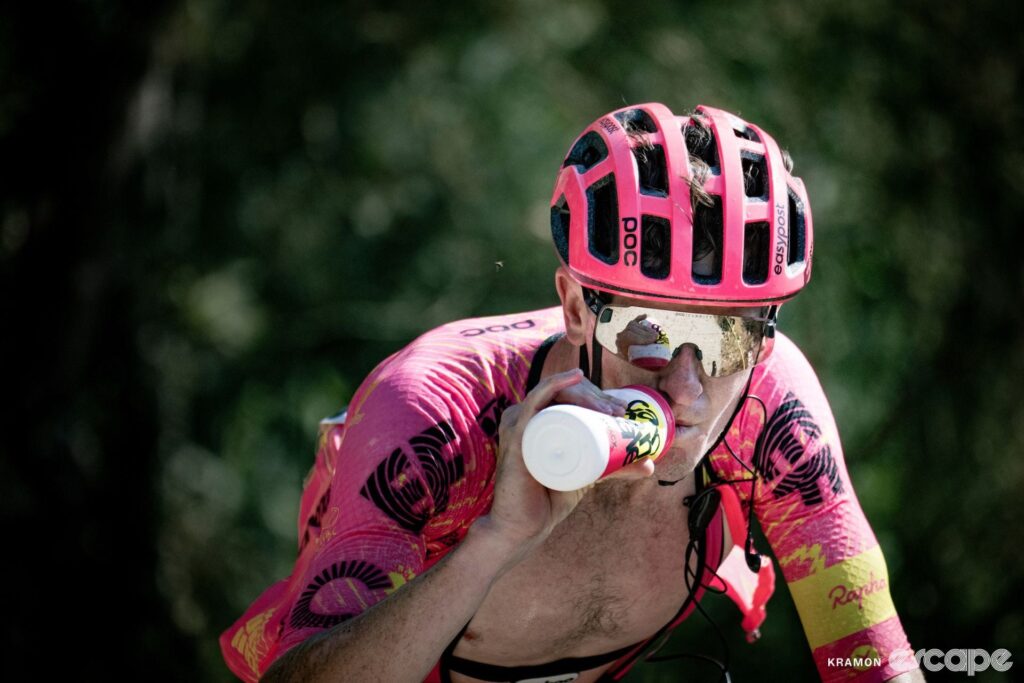
In recent years, the realm of cycling has witnessed a profound transformation, particularly in the area of nutrition and carbohydrate consumption. Traditionally, cyclists adhered to the guideline that the body could utilize 60-80 grams of carbohydrates per hour. However, this understanding is rapidly evolving. Today, many professional cyclists are consuming between 120-150 grams per hour, with some even surpassing 180 grams.
Cam Jones, during his victorious ride at the Unbound 200 this year, consumed nearly 200 grams of carbohydrates per hour over nine hours. For Jones, this ability to intake such substantial amounts of fuel while cycling is innate, a feat not easily replicable by most. Yet, increasing carbohydrate intake appears to be a key factor in enhancing performance, even for non-professional riders.
Understanding Carbohydrate Utilization
While following the practices of professional athletes may seem appealing, it’s not always the best approach for everyone. This is where ExoAnalytics, a British company, steps in. They aim to provide athletes with an objective measure of how many carbohydrates they can effectively utilize per hour. To explore this, I participated in their home test, which is now available to UK residents through their website for £350.
The Science Behind Carbohydrate Absorption
The traditional carbohydrate intake recommendations are rooted in science dating back to the mid-1990s. Initially, it was believed that the SGLT1 transporter limited carbohydrate absorption to 60 grams per hour. However, research later revealed that combining different carbohydrate sources could enhance absorption rates. Fructose, for instance, uses a different transporter (GLUT5), allowing for increased carbohydrate utilization.
This discovery led to a revised intake guideline of 90 grams per hour, using a 2:1 glucose to fructose ratio. Further adjustments to this ratio have increased the intake ceiling to approximately 108 grams per hour, with many athletes aiming for 110-120 grams. However, individual genetic differences mean that some athletes can oxidize as little as 30 grams per hour, while others can utilize up to six times that amount.
The variability in carbohydrate oxidation rates underscores the inadequacy of one-size-fits-all guidelines.
Who Can Benefit from the Test?
As with many aspects of athletic performance, there is no universal solution. The high-carbohydrate revolution is nuanced, and simply increasing carbohydrate intake doesn’t guarantee improved performance. In some cases, it may lead to gastrointestinal issues that hinder performance.
Neilson Powless, a professional cyclist, typically consumes 120 grams of carbohydrates per hour during races but has gone as high as 200 grams. Without knowing one’s personal oxidation rate, athletes risk underfueling or overfueling. Jamie Pugh, part of the ExoAnalytics team, has observed athletes capable of oxidizing 180 grams per hour who were not maximizing their potential due to a lack of knowledge about their limits.
The Future of Personalized Nutrition
The introduction of personalized carbohydrate utilization tests represents a significant advancement in sports nutrition. By understanding their unique carbohydrate needs, athletes can tailor their nutrition strategies to optimize performance and avoid common pitfalls associated with generic guidelines.
As more athletes gain access to this technology, the landscape of sports nutrition is poised for further evolution. The ability to customize nutrition plans based on individual needs could lead to breakthroughs in performance across various sports.
As the science of carbohydrate utilization continues to develop, athletes and nutritionists alike will be better equipped to make informed decisions about fueling strategies. The ExoAnalytics test marks a step forward in this ongoing journey, offering athletes the tools they need to reach their full potential.







